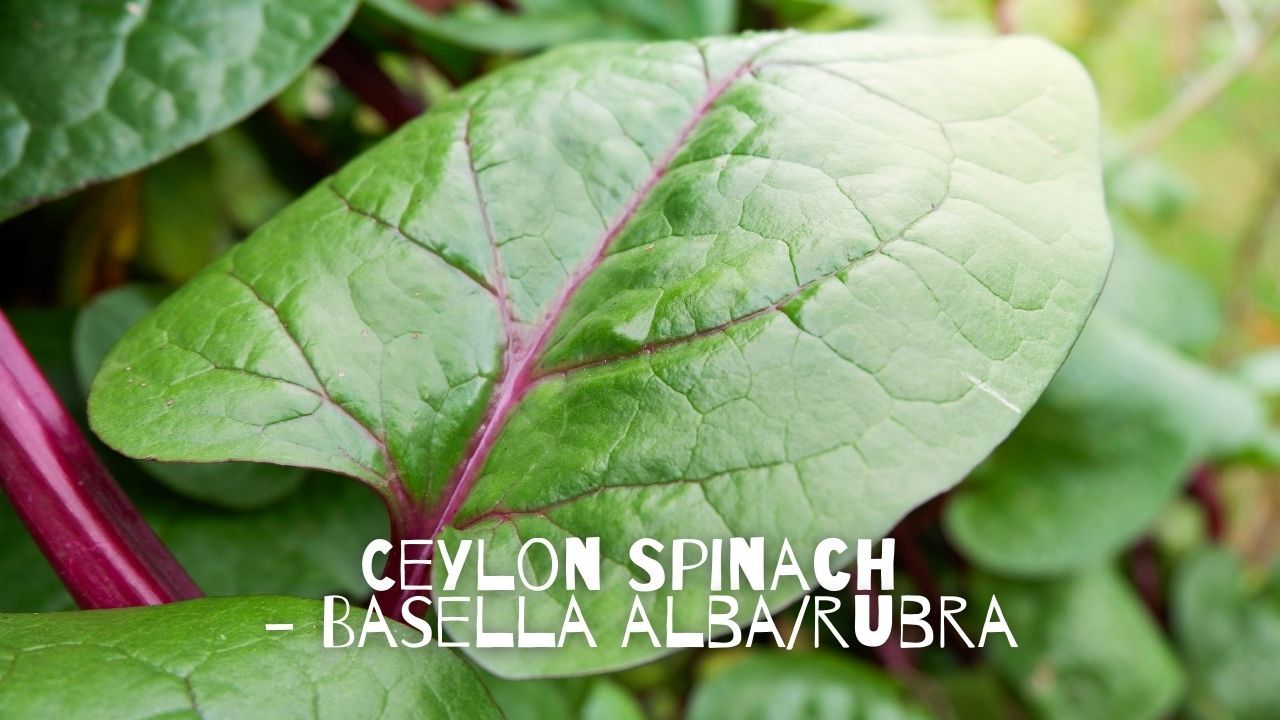Ceylon Spinach - Basella alba/rubra
Apr 18, 2023
Keynotes: Vine layer, ground or vertical climber, dye, protects the soil, poultry fodder, eat leaves.
This is a wet season must-have. It will grow rampantly over a trellis or sprawl over a bed, so use it as a cover crop if resting your veggie beds over the hot summer and turn it into the soil when preparing for annual planting in the cooler season.
I prefer to grow this along the fenceline of my veggie patch that adjoins my chicken coop, as they love to eat the leaves for free clucker tucker. The dark green leaves are rich in chlorophyll, making them one of the best nutritional greens. When I was a vegetarian, I had this vine planted at my back door and ate it every day, and when I donated blood, they said I had a really good iron count and asked me about my diet to have such results!
My fav is the purple vine variety to add a splash of colour to my very green garden, though the common green stem grows the same. If planted in the shade, you will get big leaves; if out in this sun, they become thicker and smaller.
When the berries form in the cooler months, save some of them for seed to replant next wet season and make a natural dye to play with. My kids adore outside play, covering themselves in purple berry juice before a long bath!
If you eat Dahl or scrambled eggs at my place, they will be served on a bed of these leaves, displayed as a flower to cover the plate as an edible garnish under the foods. Replace toast with leaves for anyone gluten-free, like me.
One or 2 vines are enough for any family, and consider planting in or next to your chickens, perhaps letting it cover their coop for a shady salad bar. This is just one of the important greens to grow and eat that I consider incredible edible plants (see my blog with the list).
Common Names: Malabar, Indian spinach, Vine spinach.
Origin: South East Asia.
Description: A leafy vegetable, a short-lived perennial vine with large oval leaves and white or pink flowers that grow like spikes from leaf axils. Stems can be red-purple or green. Best results from picking young plants when around 20cm high by cutting them back to the first node. Allow the vine to keep growing and keep harvesting, pinching out the ends of the vine to make it branch and become less leggy. It can ramble along the ground, but it is easier to pick the leaves if the tendrils are trained onto a trellis or up another tree. Purple-red dye was used to stamp documents by Chinese government officials. Grows rampantly in the wet season, use as a cover crop and turns into the soil for winter vegetable sowing over kitchen garden beds or grows along the fence line.
Growing Details: It will grow from a piece of stem cutting by growing roots in water or from the dark purple seed planted in the soil. Seeds may stay viable for five years. It thrives in a variety of moist or wet conditions and will grow all year round, slowing in winter in subtropics.
Soil: Prefers a moderate to rich loam.
Sun: Full sun to partial shade.
Water: Keep moist.
EAT: Rich in vitamins A and C, minerals: iron and calcium. Use younger leaves for salads. Substitute for English spinach or silver beet in any recipe. When preparing, wash leaves and remove the thickest stalks before chopping and blanching. Combines well with soft cheeses and pine nuts and is great tossed fresh into Asian stir-fries. The dark fruit can be used to colour jellies or as a fabric dye. Mucilaginous qualities are used for thickening and aiding digestion.
The recipe accompanying this plant featured in my Incredible Edibles Tropical Superfoods Guide is Grab my book here or join my mailing list to stay tuned for future blogs with these 'garden to plate' recipes.
If you already have my book, you might like to expand your garden species with Blake Hudson's book: Tropical Food Plants, which is an extensive resource that explores the incredible diversity of more than 121 edible tropical plants that can be grown in tropical and sub-tropical regions around the world. He has carefully selected the most appropriate for tropical regions, such as Australia, Florida and the Asia Pacific. Learn more about it here: Tropical Food Plants - A Field Guide to Tropical Edible Plants, by the EarthEartisan.
Tropical gardening can be easy if you know what you are doing. It is true to say that it is a whole different experience to temperate climates in which much of the information out there teaches. My blog: Tropical Planting Guide - A List of Plants Annual Vegetable Gardening, offers some insight into the best growing times with respect to our wet and dry seasons and, better yet, a free download to print and use to plan your abundant veggie patch. I have also provided some gardening tips that will help you on your garden-to-plate journey, such as planting by the moon, staggering harvests and seed suppliers!
If it is the practical hands-on and permaculture design skills you want to gain, then come along to learn with like-minded folk in our garden (mine and Blake's) or other wonderful demonstration sites in our FNQ region. You can learn more about my offerings here: https://www.earthmumma.co/workshops-courses.
Yes, we have plants available in our home nursery. Please contact me if you would like to order some to get your garden growing!
If this information was helpful, learn about more of the plants we love to grow and eat here: The Incredible Edibles Superfood Plant List!











